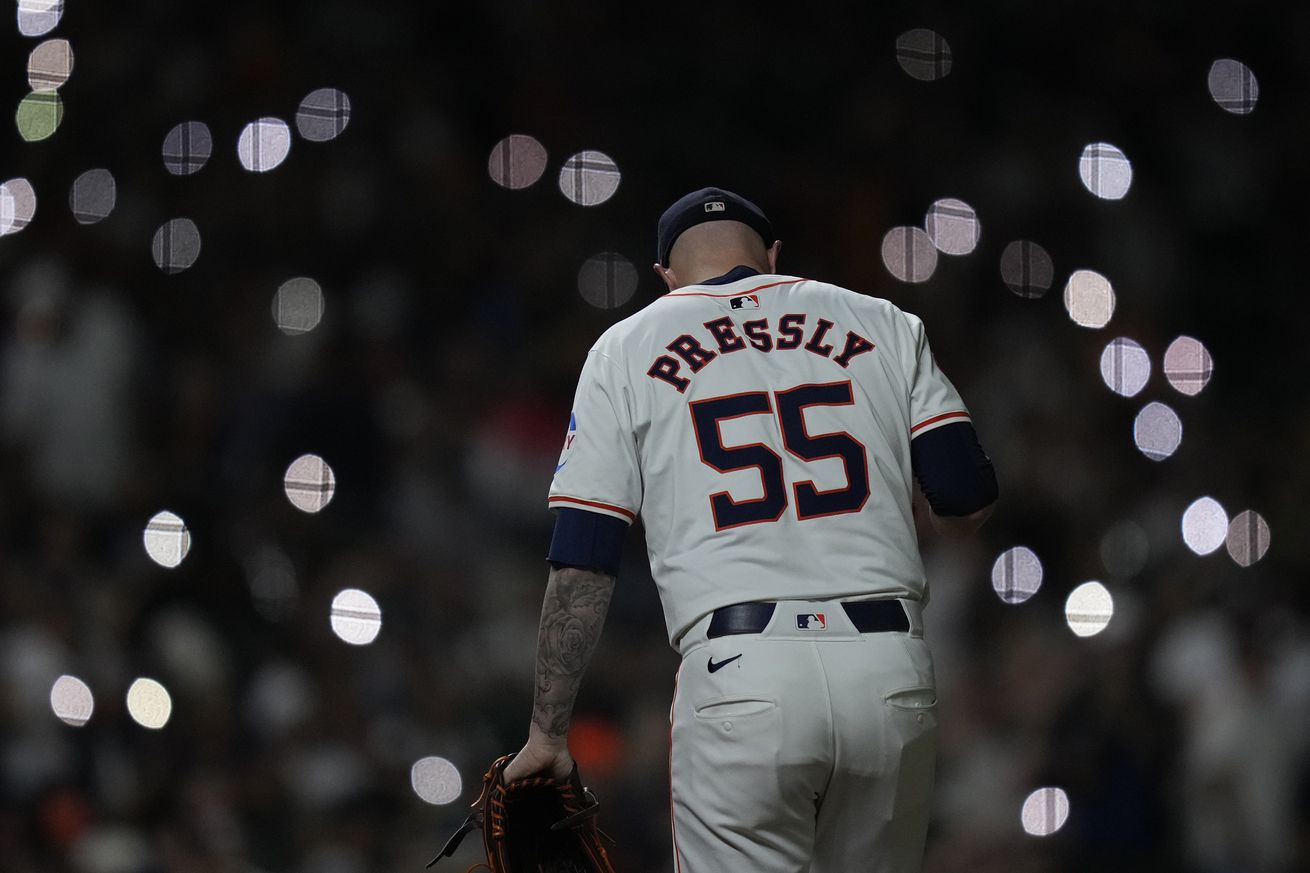
When the Astros acquired Ryan Pressly during the 2018 season, I immediately fell in love with his slider. It was a pitch that the organization had him embrace upon his arrival, with usage rates consistently ranging from 30% to 40% during his tenure. The results warranted such a usage jump. For context, he threw it about 18% of the time in his last full season with the Twins in 2017. How couldn’t you fall in love with a pitch that does this?
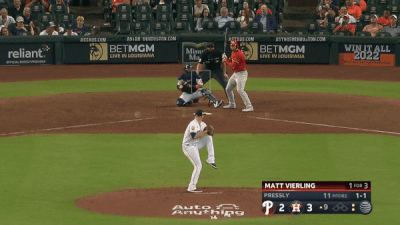
Pressly throws primarily three pitches: A four-seam fastball and a curveball in addition to his slider. A changeup has gradually been re-introduced into his pitch mix dating back to 2022, with its usage now at 11% for this season. But he remains mostly a four-seam, curveball, and slider kind of pitcher. But the right-hander’s results in 2024 have been, well, increasingly mixed. His 3.67 ERA, if the season concluded today, would be his highest mark as an Astro. A 3.12 FIP is still plenty respectable; however, strikeouts continue to trend downward. As I wrote back in June, Pressly’s velocity continues to decline compared to even a year or two ago. His average four-seam velocity, for example, is now 94 mph on the season compared to 94.5 mph and 94.7 mph in 2022 and 2023. The peak of Pressly’s powers has continued to erode and it is showing a bit.
One of the more curious aspects of Pressly’s profile this season is his usage rates. From 2022-23, his most often used pitch was his slider, hovering around 37% to 40%. While his curveball usage remained static at around 27%, his four-seam usage saw increasingly sharp declines. Last season, for example, his four-seam rate was only 23.1%, by far the lowest mark in his career to date. I wondered if the declining velocity played a role in this decision. I mean, it made sense why he would want to limit the exposure of his four-seam and use his other pitches a bit more, including a changeup. His fastball has never been his best option, even when he was averaging closer to 95.5 mph. But something noticeable happened for this season: Pressly’s four-seam usage, even with a continued velocity decline, has made a comeback and at the expense of his slider.
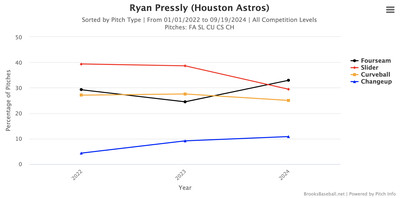
I find this decision quite interesting. For one, his fastball has become increasingly prone to problems, with opposing hitters posting a .516 slugging percentage against it. Take it a step further and you see a .529 expected slugging percentage. Of his three main pitches, it is the weak link of the bunch. To be fair, those marks aren’t too far from his 2022 numbers. But there are differences to account for. Location-wise, Pressly has been throwing it more in the middle part of the zone. That’s not…great.
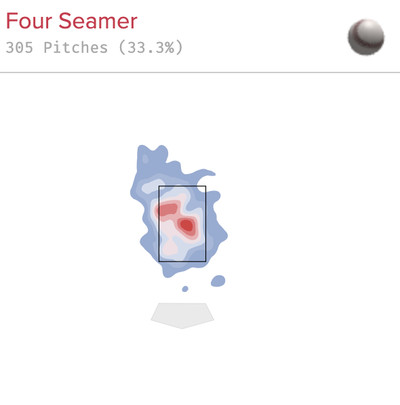
While there is historical precedence for Pressly concentrating his fastball in the middle parts of the zone, he also had more velocity on his side. That matters. Interestingly enough, his whiff rate on fastballs has climbed back to roughly 2022 levels, rebounding from 9.2% last year to 17.3% today. But location matters and I don’t think that is a thing to easily toss aside. Alas, for him to throw his four-seam more this season where he’s locating it compared to past years with better velocity remains a bit astounding to me.
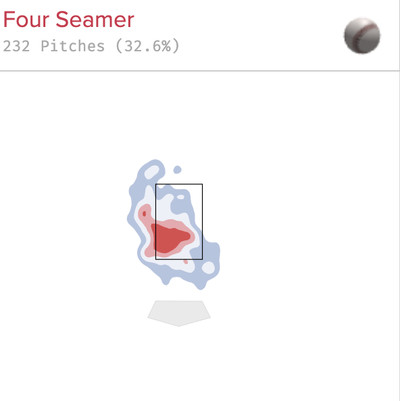
In terms of movement, I think there is something else there to monitor. The pitch has noticeably more vertical drop, around 14.7 inches this season, the most in any full season of his career. Combine all of these factors — velocity, location, and movement — together and it isn’t a surprise to see his four-seam performance adjust.
I also wonder if that lessened version of his fastball is playing a role in his slider’s decline. After all, based on Batter Run Run Values, Pressly’s slider went from +7 runs in 2023 to only +1 runs this season. That’s a large drop for a pitch that hasn’t graded out that poorly by this metric since 2017. But as it pertains to both horizontal and vertical movement, there isn’t much of a difference, at least one large enough that would help explain why it is also struggling a bit. Velocity is on par with recent seasons. But there is the location aspect to consider again. Consider this: Pressly’s slider in-zone rate in 2022 was 37.4%. With how sliders are designed to operate, they are meant to generate swings and misses. Pressly has largely tunneled his four-seam and slider quite well to create this effect.
However, Pressly’s slider has been finding more of the zone, even with its decreased usage. For example, his slider’s in-zone rate climbed to 47.6% last season, a large jump. In 2024, unfortunately, it has only gotten worse with a rate now around 50.6%. In turn, we’re seeing fewer misses from opposing hitters.
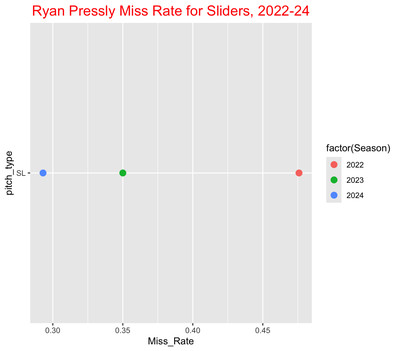
If Pressly’s fastball isn’t right, then it isn’t a surprise to see his slider also struggle considering how these two pitches play off of each other. That is a major reason why the right-hander hasn’t been the same shutdown reliever we’ve all come to know and root for. To be clear, Pressly remains a really good reliever. There still aren’t many better than him. But his location will need to improve in a hurry if he wants to regain his full prowess. We’re probably past the point of return considering his age and velocity decline. But that doesn’t mean there isn’t plenty left in the tank at the moment. We should probably adjust our expectations, though.